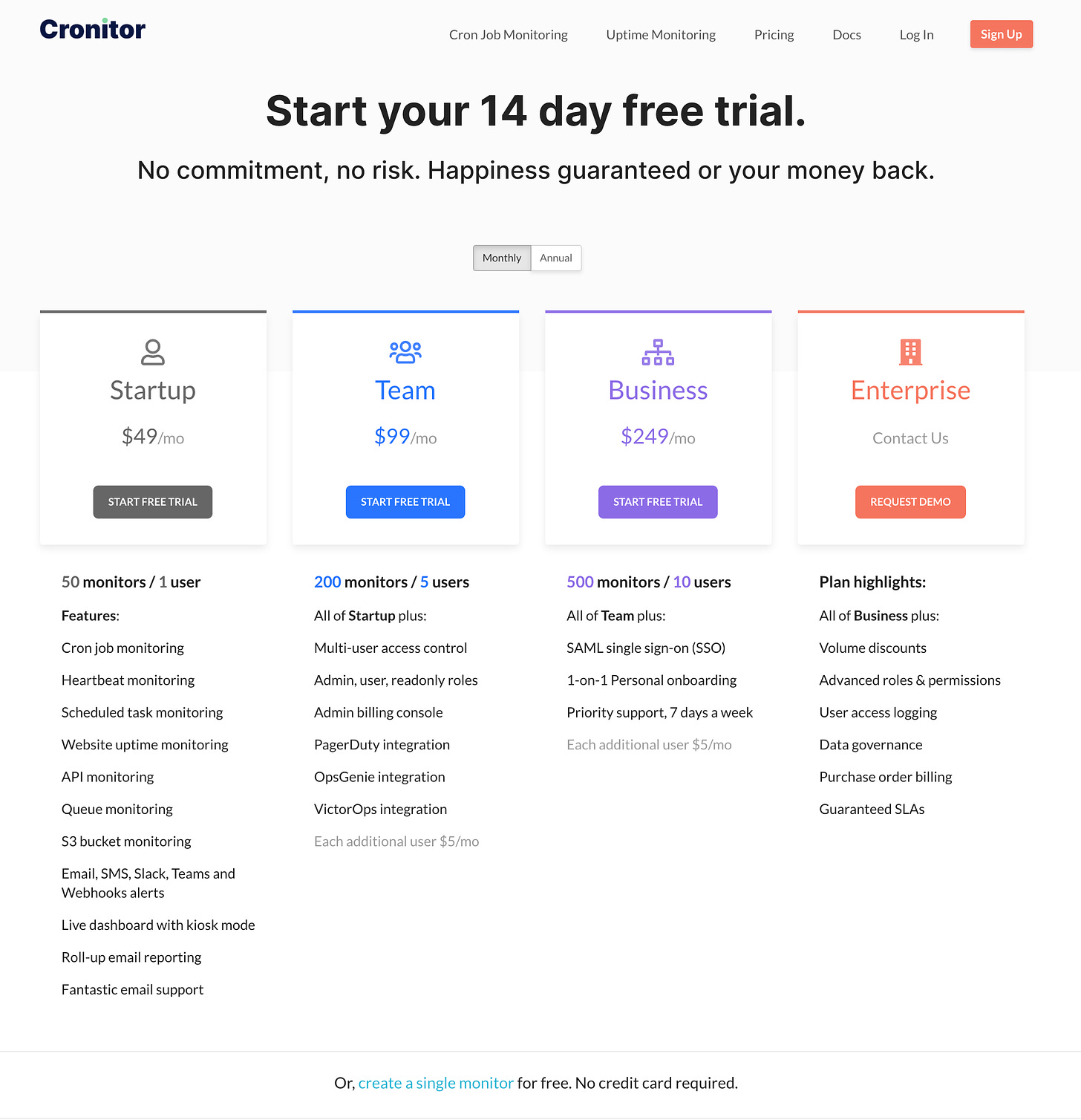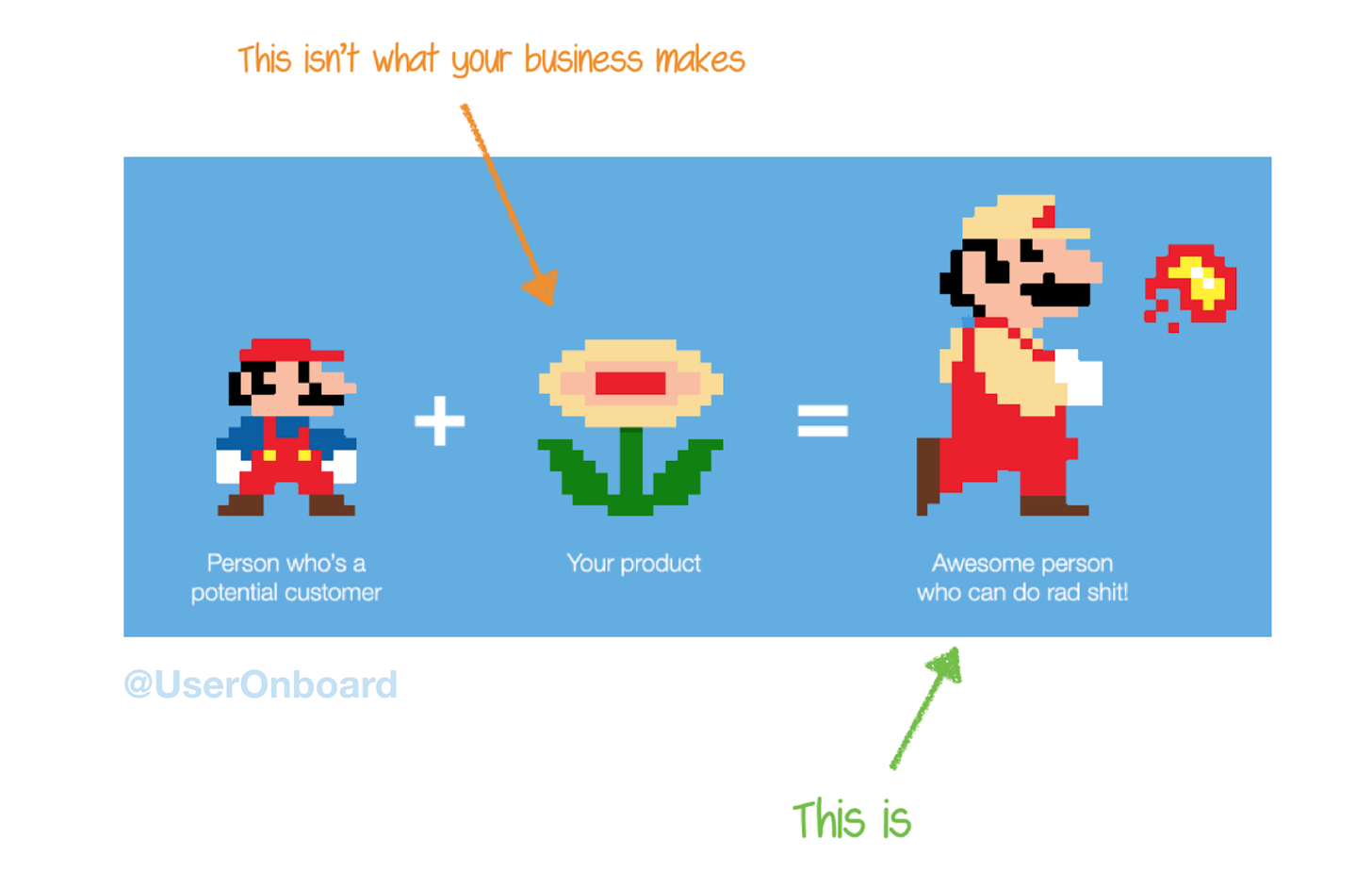Early Sales for Developer-Facing Startups
I sat down with my friends August Flanagan and Adam Gross. August is a startup founder, and he is considering dialing up sales for his new developer-facing company called Cronitor.
I think there are thousands of engineers in his position, without a strong background in sales and considering how to step on the gas. So I asked Adam Gross to join us. I met Adam early at Dropbox where he lead Sales. He has also invested in multiple developer-facing companies and served as CEO of Heroku.
This is a masterclass crash course on how to think about getting started in sales.
Cronitor started out of a need to monitor the status of dozens of background jobs. It became a side project and grew slowly. Most of the customers come from SEO through cron based content marketing.
Now they have $28K MRR with zero outbound and no sales focus. What should be the very next step? The goals this year are to figure out how to grow faster. This is obviously a common question for many developers.
Adam’s first question was about scale, with that MRR and 500 customers, with a few thousand users, growing revenue around 5% MoM. On the technical side, Cronitor ingests 30M pings days of telemetry.
The 2nd question is the business goal. August wants to understand what to do beyond self serve.
There are three categories:
How to acquire users?
How to move people through the funnel?
How do you increase average contract value?
When you have a lot of VC money, you tend to build out a marketing function just because you can. Cronitor is bootstrapped to date, so is investing in marketing with more care, but many more companies should carefully consider what to do.
Doing more outbound means increasing the deal size because of the cost of a sales function. But Cronitor at $2500/year can’t support that kind of sales infrastructure.
What is the rule of thumb? A sales rep should bring in $1M/year. For $2500 per deal, that would be a very high pace for a sales rep. Using the LTV is better than the first year revenue, but this is way off.
So what should Cronitor do with it’s prices? Cronitor is a bottoms-up developer-first GTM. There are 3 modes that work:
Free
Self serve paid
Enterprise
Typically, you build the free channel, then the self-serve, and then enterprise. Adam’s rule of thumb is don’t build enterprise until you’re $10M ARR. That might seem very high! But the cost of building out enterprise sales and support is very high, and Cronitor has so much more to grow with self serve.
One reason is that you need a large funnel of free and self serve customers to support the enterprise pipeline. You’ll work to expand those free and self serve channels anyway to try to make enterprise work. But it’s also the organizational cost.
It’s like a meal kit vs a restaurant. There is a whole organization required in a restaurant to serve a meal. Meal kit is self serve and really different.
The Crontitor pricing page highlights the trial when there is actually a free tier to get started.
You could also consider selling the sizzle. My favorite analogy is from User Onboard where you’re selling Mario with fireballs, not the power flower.
So what do you invest in if not in sales? Support! Hiring an excellent support rep will help those who are already coming to your service and consider buying. Support is marketing and docs are marketing.
Beyond that, examine your users to aggregate different users across a large organization and then sell to that org.
There is also refinement on pricing for Cronitor. A very small percentage of people are on the “Startup” plan at $49/mo, which means ops isn’t nearly as price sensitive. Experimenting here is hard, but it would make more sense to let people start free and then charge more for the teams that do integrate.
But how to change prices? Adam has an incredibly valuable idea: grandfather in users for a time, but couple the change with more features. Only allow people to get the new features if they step out of the grandfathered pricing. This is a way of incentivizing upgrading pricing, and users will think it’s a fair trade.
What about fundraising? There are rules of thumb like hitting an ARR number to raise a seed, or what might get you into Y Combinator and hitting demo day hard. But first consider whether you want to fundraise, which would mean you’re aligned with the venture model.
Assuming you want to raise, what counts for first-money-in fundraising is adoption and market, not revenue. An investor is asking “how big can this be?” and not “how do I get people to spend $49/mo”. Then step 1 is how you acquire people, which is SEO today.
As an investor, Adam loves to look at community affinity. Heroku was rails. Github was git. What might that community be for Cronitor? Maybe something around databases and backup?





